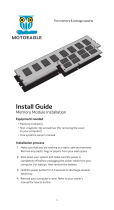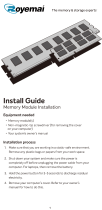
8 Removal and Replacement Procedures ............................................................................ 46
Preparation for Disassembly .................................................................................................... 46
Power Supply Cover ............................................................................................................... 47
Decorative Panel (IMD) ........................................................................................................... 48
Rear I/O Panel ...................................................................................................................... 49
Using the USB Security Cover .................................................................................................. 50
Mounting Bracket Cover ......................................................................................................... 53
Display Head Back Panel ........................................................................................................ 54
RP7 Adjustable Stand ............................................................................................................. 55
Routing Cables to External Devices ........................................................................................... 60
Optional Integrated USB Modules ............................................................................................ 63
Optional HP Retail RP7 10.4” Customer Display ........................................................................ 68
Optional HP Retail RP7 VFD Customer Display ........................................................................... 76
Installing the VFD Customer Display Without Poles ...................................................... 76
VFD Customer Display With One or Two Poles ........................................................... 80
Cable Management ............................................................................................................... 85
Memory ................................................................................................................................ 86
SODIMMs .............................................................................................................. 86
.............................................................................................................................. 86
DDR3-SDRAM DIMMs ............................................................................... 86
Populating DIMM Sockets ........................................................................................ 87
Installing DIMMs ..................................................................................................... 87
Hard Drive ............................................................................................................................ 90
Removing the Display Head from the Stand ............................................................................... 94
Rear Metal Plate (EMI shield) ................................................................................................... 95
Battery .................................................................................................................................. 97
Blower .................................................................................................................................. 99
Associate-Facing Display (AFD) .............................................................................................. 101
Heat Sink ............................................................................................................................ 103
Processor ............................................................................................................................ 105
Drive Cables and Bracket Assembly ....................................................................................... 106
Hood Sensor ....................................................................................................................... 109
Hard Drive LED Cable .......................................................................................................... 111
Speaker .............................................................................................................................. 112
USB+PWR 24V and Cash Drawer Port Daughter Card ............................................................. 113
WLAN Module .................................................................................................................... 114
System Board ...................................................................................................................... 115
Appendix A Backing up, restoring, and recovering in Windows 7 and POSReady 7 ......... 117
Creating recovery media ...................................................................................................... 118
Creating recovery media using HP Recovery Manager (select models only) .................. 118
vii





















